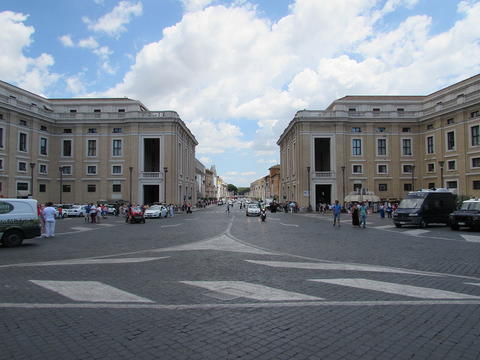
Zona de identificação
Tipo de entidade
Forma autorizada do nome
Forma(s) paralela(s) de nome
- Sacred Congregation for Consultations About Regulars
- Congregation for Religious and Secular Institutes
Formas normalizadas do nome de acordo com outras regras
Outra(s) forma(s) de nome
identificadores para entidades coletivas
Área de descrição
Datas de existência
Histórico
https://www.newadvent.org/cathen/13136a.htm
Sixtus V first erected by a Brief of 17 May, 1586, and afterwards, by the Constitution "Immensa", confirmed, a congregation "super consultationibus regularium" distinct from the congregation "super consultationibus episcoporum et aliorum prælatorum" mentioned in the same Constitution. In 1601 these two congregations were already combined in the Congregation of Bishops and Regulars, to which, in course of time, were united three other congregations whose functions were closely related. These three were: the Congregation on the State of Religious (super statu regularium), created by Innocent X on 15 August, 1652, for the reformation of regulars in Italy, and suppressed by Innocent XII on 4 August, 1698; the Congregation on Regular Discipline (super disciplina regulari), instituted by Innocent XII on 18 July, 1695, for the reformation of regulars not only in Italy but throughout the whole world; the Congregation on the State of the Regular Orders (super statu regularium ordinum), created by Pius IX on 17 June, 1847. The last-named and the one on regular discipline were suppressed by Pius X, by the Motu Proprio of 26 May, 1906, which united these congregations with that of Bishops and Regulars. The new Constitution of Pius X abolishes the Congregation of Regulars and Bishops and transfers that part of its business which concerns bishops to the Congregation of the Council, and that part of it which concerns regulars to a congregation (oongregatio negotiis religiosorum sodalium præposita) created by the new Constitution, and which by common usage sanctioned by the legend on the official seal of the congregation, has received the name of Congregatio of Religious.
This body has the usual organization of the Roman Congregations. It is formed of several cardinals, who are chosen by the pope, and one of whom is the prefect of the congregation; these cardinals are assisted by a secretary and a sub-secretary, who are the major officials of the congregation, and by several minor officials. In regard to the latter it is to be noted that, as the amount of its business necessitates a division of the congregation into three parts (as in the case of the Congregation of the Sacraments), the highest dignitaries among the minor officials are the three assistants who are placed over the three sections. One of these sections has to deal with matters relating to religious orders; another, with the business of religious congregations or associations of men, of whatever nature those associations may be; the third, with business relating to congregations of women. This congregation also has a college of consultors.
The Constitution of Pius X clearly defines the competency of this congregation, which is to pass judgment upon all matters relating to religious persons of either sex, whether bound by solemn or by simple vows, or to those persons who, although they be not religious in the canonical sense of the word, live as religious — such as the oblates of certain communities of men or of women, who, without being bound by vows, live a common life under an approved rule. The third orders, consisting of seculars, are also under this congregation. It decides in litigations between members of religious orders, or between religious and bishops, and it is the competent tribunal in eases which have to be dealt with in the way of discipline (in via disciplinari) where a religious appears either as plaintiff or as defendant. Hence it is to be inferred, and indeed is expressly stated in the Constitution, that causes which have to be dealt with in the judicial way must be referred to the Rota, the rights of the Holy Office being always safeguarded. Finally, all common law dispensations to regulars pertain to this congregation, excepting dispensation from the Eucharistic fast, which, as said above, pertains to the Congregation of the Sacraments. The Congregatio of Religious is alone competent to approve new religions institutes and their constitutions, as well as to modify institutes already approved, and these being matters of grave importance, the full congregation deals with them.
Locais
Rome